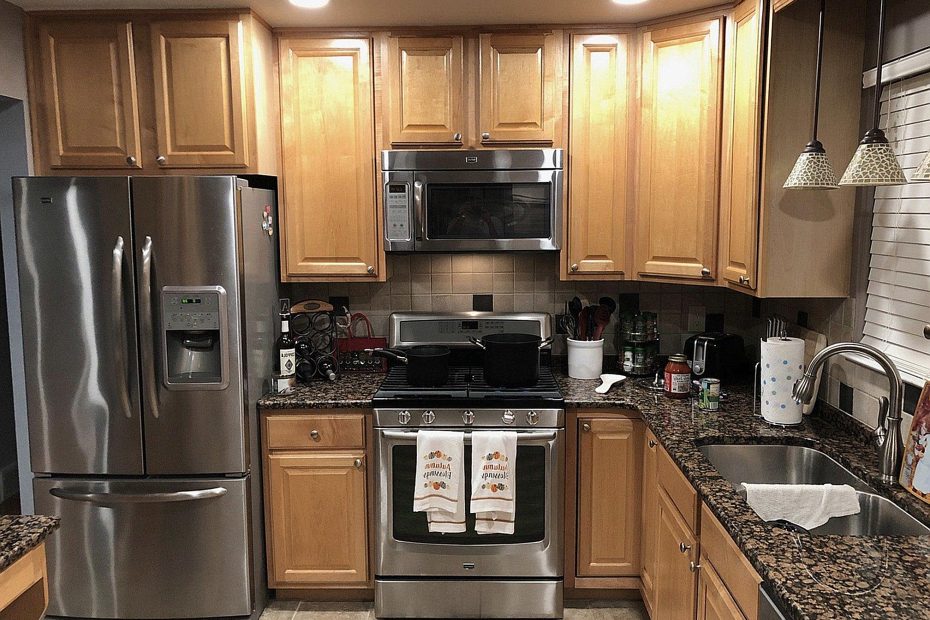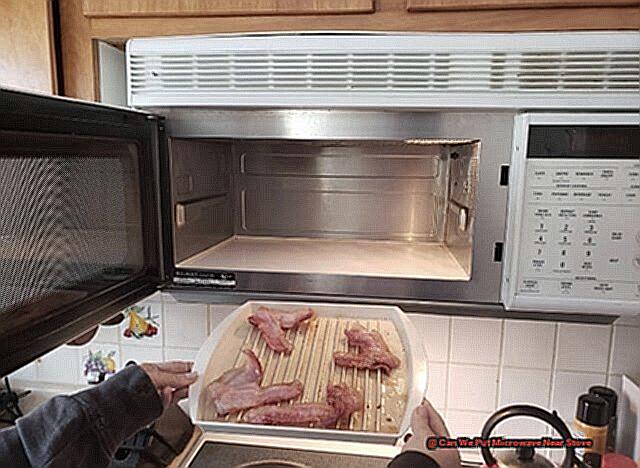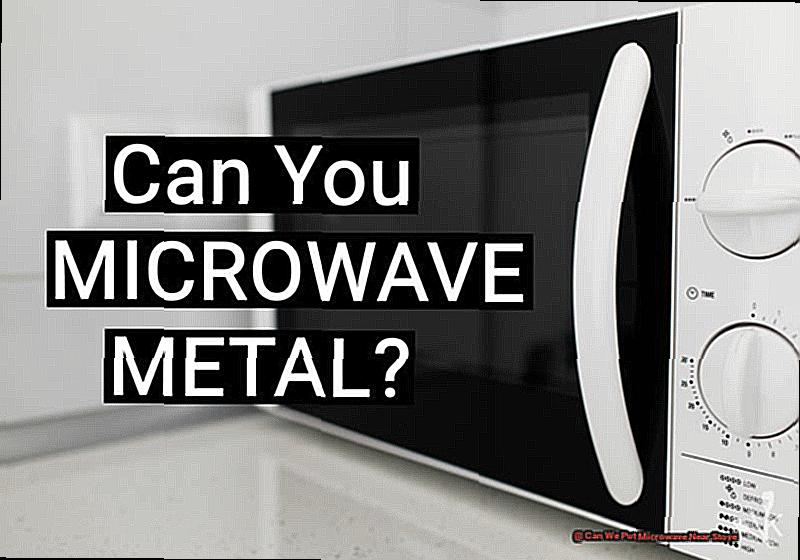In modern kitchens, microwaves have become an essential tool for quick and convenient cooking and reheating. But with limited counter space, the question of where to place this kitchen staple arises. One common concern is whether it’s safe to put a microwave near a stove. This topic has sparked debates among homeowners and kitchen designers alike. In this blog post, we will delve into the safety considerations of having a microwave near a heat source and offer helpful tips for making this decision.
- Is it safe to have a microwave in close proximity to a heat source?
- What are the potential risks of placing a microwave near a stove?
- How can you ensure the safety of your kitchen while maximizing space?
- Are there alternative options for positioning your microwave?
While some may argue that having a microwave near a stove poses safety hazards, others believe that with proper precautions, it can be perfectly safe. Let’s get to the bottom of this hot topic (pun intended) by exploring the facts and debunking any myths.
Whether you’re renovating your kitchen or seeking ways to optimize space, read on to discover everything you need to know about placing your microwave near a stove.
Contents
Pros and Cons of Putting a Microwave Near a Stove
When it comes to the placement of a microwave near a stove, there are both positives and negatives to consider. While it may seem like a convenient space-saving option, there are also potential safety concerns and limitations in terms of cooking capabilities.
It is crucial to take into account the distance between the two appliances, the type of stove being used, and practical and aesthetic factors when making the decision to have a microwave near a stove. It is highly recommended to seek the advice of a professional electrician for proper installation and safety measures.
The Pros and Cons of Putting a Microwave Near a Stove:
Having a microwave in close proximity to a stove can be beneficial in terms of convenience. You can easily transfer food from the stovetop to the microwave for reheating or defrosting without having to travel far. This can save time and make meal preparation more efficient. However, this setup also has its drawbacks.
One of the main concerns is safety. Placing a microwave too close to a stove can increase the risk of fire hazards. The heat from the stove can cause the microwave to overheat, leading to potential electrical issues. Additionally, if combustible materials are placed on top of or near the microwave, it can catch fire due to its close proximity to the heat source.
Another limitation is that having a microwave near a stove may limit your cooking options. For example, if you have a gas stove, having a microwave above it may make it difficult to use larger pots and pans on the stovetop. This can be inconvenient if you often cook large meals.
Furthermore, aesthetics should also be considered when deciding on the placement of a microwave near a stove. While some may prefer a streamlined look with both appliances side by side, others may find it visually unappealing. It ultimately comes down to personal preference and the layout of your kitchen.
While there are benefits to having a microwave near a stove, there are also potential safety hazards and limitations to keep in mind.
Safety Guidelines to Follow
When considering placing a microwave near a stove, it is crucial to follow several key safety guidelines to ensure the safety and efficiency of both appliances. These guidelines are essential in minimizing potential hazards and include the following:
Maintain a minimum distance of 2 feet between the microwave and stove: This distance is necessary to prevent overheating of the microwave and to avoid food splattering onto the microwave, which may cause damage or pose a safety risk.
- Ensure proper ventilation: Proper ventilation is crucial in preventing fire hazards and maintaining air flow in the kitchen. Make sure there is sufficient space around the microwave for proper air circulation.
- Consider using an over-the-range (OTR) microwave: OTR microwaves are specifically designed for placement above a stove, making them a convenient option for compact kitchens. However, it is important to properly ventilate and space them from the stove to prevent any potential hazards.
- Refer to product manual for specific guidelines: It is important to note that the optimal distance between stovetop and microwave can vary depending on the brand and model. Always refer to the product manual for specific instructions on safe placement.
- Place microwave on countertop next to stove: If you have any concerns about height or potential burning risks with an OTR microwave, consider placing it on the countertop next to the stove for easy access.
Regularly check oven temperature and experiment with placements: To ensure safety and functionality, it is important to regularly check the oven’s temperature when using a microwave near a stove. Additionally, experimenting with different placements can help determine the best spot for optimal safety and efficiency.
Adequate Space Requirements
When it comes to safely placing a microwave near a stove, it is crucial to consider the adequate space requirements. The recommended distance between the two appliances may vary depending on the type of microwave and your local building code. To ensure maximum efficiency and prevent hazards, it is important to follow these key safety guidelines:
- Check your building code: Before installing your microwave, it is essential to check your local building code for specific requirements or restrictions. This will ensure that you are following safety regulations and avoiding potential hazards.
- Maintain a 2-foot distance: According to the International Residential Code, there should be no clearance between the stove’s combustible surface and the microwave unit. However, it is recommended to maintain a distance of at least 2 feet between the two appliances to allow for proper ventilation and prevent heat transfer.
- Refer to the product manual: Each microwave model may have different specifications for installation near a stove. It is important to refer to the product manual for specific instructions and recommendations for spacing between the microwave and stove.
- Allow enough space above the stove: It is crucial to provide sufficient space between the bottom of your microwave and the top of your stove. This distance should be at least 13 inches, depending on your microwave’s model, to prevent any heat transfer or potential hazards.
- Consider the type of microwave: The type of microwave also plays a role in the recommended spacing near a stove. A countertop microwave requires less space, so 2 feet is enough for it, while an over-the-range or built-in microwave may require more space due to their ventilation systems.
To better understand the recommended space requirements for safely placing a microwave near a stove, please refer to the following table:
| Type of Microwave | Recommended Spacing |
| Countertop | 2 feet |
| Over-the-Range | at least 2 feet |
| Built-in | at least 2 feet |
In addition to these guidelines, it is essential to use common sense and ensure that the microwave is not too close to the stove, as this can pose a potential fire hazard.
Ventilation for Proper Airflow
Ventilation for Proper Airflow is a crucial factor to consider when determining the placement of a microwave near a stove. Inadequate airflow can result in heat transfer, overheating of electronic parts, and the accumulation of condensation on the microwave. This is especially critical for built-in microwaves, as they are often enclosed in cabinets without proper airflow. It is imperative to guarantee sufficient ventilation and adhere to the manufacturer’s recommendations for safety and optimal functionality.
When it comes to installing a microwave near a stove, proper ventilation cannot be overemphasized. Not only does it ensure that the appliance functions correctly, but it also prevents any potential hazards. Inadequate ventilation can lead to heat transfer, where heat from the stove affects the microwave’s performance. This can cause the microwave to overheat, damaging its electronic components and potentially rendering it useless. Moreover, without proper ventilation, condensation can build up inside the microwave, causing damage to its internal mechanisms.
To avoid these issues, it is vital to follow the manufacturer’s guidelines for ventilation and placement of the microwave. This includes leaving enough space between the stove and microwave and ensuring that there is proper airflow around the appliance. Built-in microwaves are particularly vulnerable to insufficient ventilation as they are often enclosed in cabinets without proper airflow. This can lead to overheating and other issues if not addressed properly.
In conclusion, when installing a microwave near a stove, proper ventilation is crucial for both safety and functionality purposes. Failure to ensure sufficient airflow can lead to various issues that can affect the appliance’s performance and longevity.
Considerations for Different Types of Stovetops
Possible Safety Concerns:
- Fire Risk: If a microwave is placed too close to a stovetop, it can be a potential fire hazard, especially for gas stovetops that produce open flames.
- Burn Hazard: There is a risk of getting burned by hot food or liquids spilling if the microwave is above the stovetop. Additionally, there is a possibility of the microwave falling and causing injury.
- Long-Term Damage: Exposure to constant heat from the stovetop can lead to damage and deterioration of both the microwave and stovetop.
- Interference with Electronics: When an induction cooktop is placed too close, it can interfere with the electronic components of a microwave, causing malfunctions or damage.
Considerations for Different Stovetop Types:
Type of Stovetop | Recommended Distance Between Microwave and Stovetop
— | —
Electric | Minimum of 3 inches
Gas | Minimum of 6 inches
Induction | Minimum of 3 inches
Expert Insights for Safe Placement:
- Maintain Appropriate Distance: It is crucial to follow the recommended distance between the microwave and stove for safety purposes.
- Safety Over Convenience: While it may seem convenient to have a microwave near the stovetop, safety should always be the top priority when it comes to our homes and loved ones.
- Proper Installation and Maintenance: To minimize potential risks, make sure that both the microwave and stovetop are properly installed and regularly maintained.
- Keep Flammable Objects Away: To prevent fire hazards, keep any flammable objects, including the microwave, at a safe distance from the stove.
Conclusion
In conclusion, while the idea of having a microwave near a stove may seem convenient, it is crucial to carefully consider safety implications and follow proper guidelines.
While this setup offers benefits such as easy food transfer and efficient use of space, it also comes with potential risks like fire hazards and limitations in cooking capabilities. By adhering to safety guidelines, maintaining adequate space, ensuring proper ventilation, and considering the type of stovetop being used, you can safely place your microwave near a stove without compromising convenience or safety.
Remember to prioritize safety over convenience and seek professional advice for installation and maintenance.







